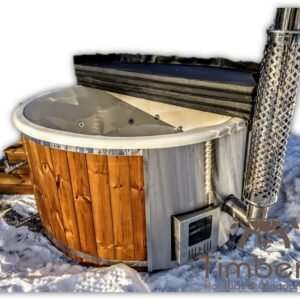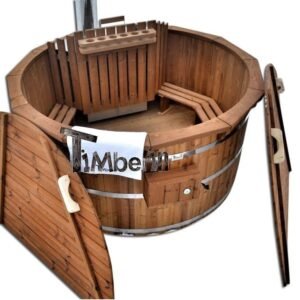Wood-fired hot tubs have become increasingly popular in recent years, offering a rustic and natural way to relax and unwind. However, one common question that arises is whether or not these hot tubs can freeze during the colder months. In this blog post, we will explore the factors that contribute to the freezing of wood-fired hot tubs and provide some tips on how to prevent this from happening.
Best Selling Models
-
 20% OFF!
20% OFF!Log Burner Hot Tub with Jets – TimberIN Rojal
From: €4,427From: €3,689 -
 Spacious!
Spacious!Square rectangular hot tub
From: €2,229 -
 For 2 persons!
For 2 persons!2 Person Hot Tub Wood Fired
From: €1,710 -
 External burner
External burnerWood heated Hot Tub
From: €2,199 -
 Wooden thermo
Wooden thermoBarrel Wooden Hot Tub Deluxe thermowood
From: €2,743 -
 Square model
Square modelHot Tub Square 2.2×2.2 m
€4,108
Wood-fired hot tubs are typically made from sturdy materials such as cedar or redwood, which are known for their durability and resistance to the elements. However, even with these robust materials, there is still a possibility that the water in the hot tub can freeze if certain conditions are met.
Temperature and Insulation
The primary factor that determines whether or not a wood-fired hot tub will freeze is the temperature. If the temperature drops below freezing, which is 32 degrees Fahrenheit or 0 degrees Celsius, the water in the hot tub can turn into ice.
Another crucial factor is the insulation of the hot tub. Proper insulation can help retain heat and prevent freezing. Hot tubs with thicker walls and better insulation will have a higher resistance to freezing. It is essential to choose a hot tub with adequate insulation if you live in an area with particularly cold winters.
Maintenance and Usage
Regular maintenance and proper usage can also play a significant role in preventing a wood-fired hot tub from freezing. Here are a few tips to help you keep your hot tub functioning optimally during the winter:
1. Keep the hot tub covered when not in use. A high-quality cover will help retain heat and prevent freezing.
2. Check the water temperature regularly and add more firewood as needed to maintain a consistent heat level.
3. Ensure that the chimney is clear of any obstructions to allow for proper airflow and efficient combustion.
4. Drain and refill the hot tub periodically to prevent the water from becoming stagnant and prone to freezing.
Preventing Freezing
If you live in an area with extremely cold temperatures, you may need to take additional measures to prevent your wood-fired hot tub from freezing. Here are a few extra steps you can take:
• Consider installing a freeze protection system. These systems use sensors to monitor the temperature and automatically activate a heater if it drops below a certain threshold.
• Insulate the plumbing and pipes connected to the hot tub to prevent freezing. You can use foam insulation or heat tape for this purpose.
• Use a hot tub cover with built-in insulation to provide an extra layer of protection against the cold.
By following these guidelines and taking appropriate measures, you can enjoy your wood-fired hot tub year-round without worrying about freezing. Remember to consult the manufacturer’s recommendations and seek professional help if needed.


